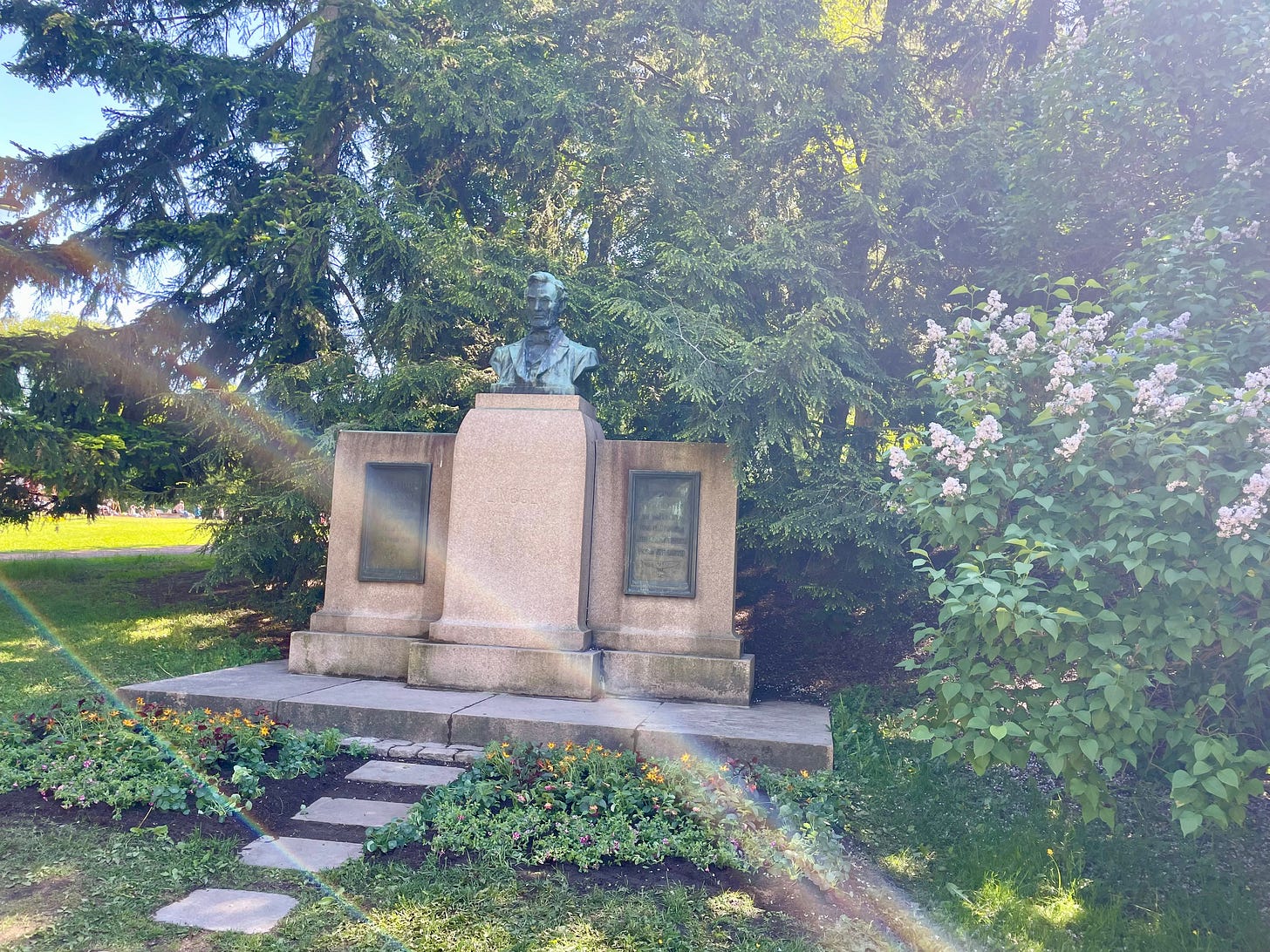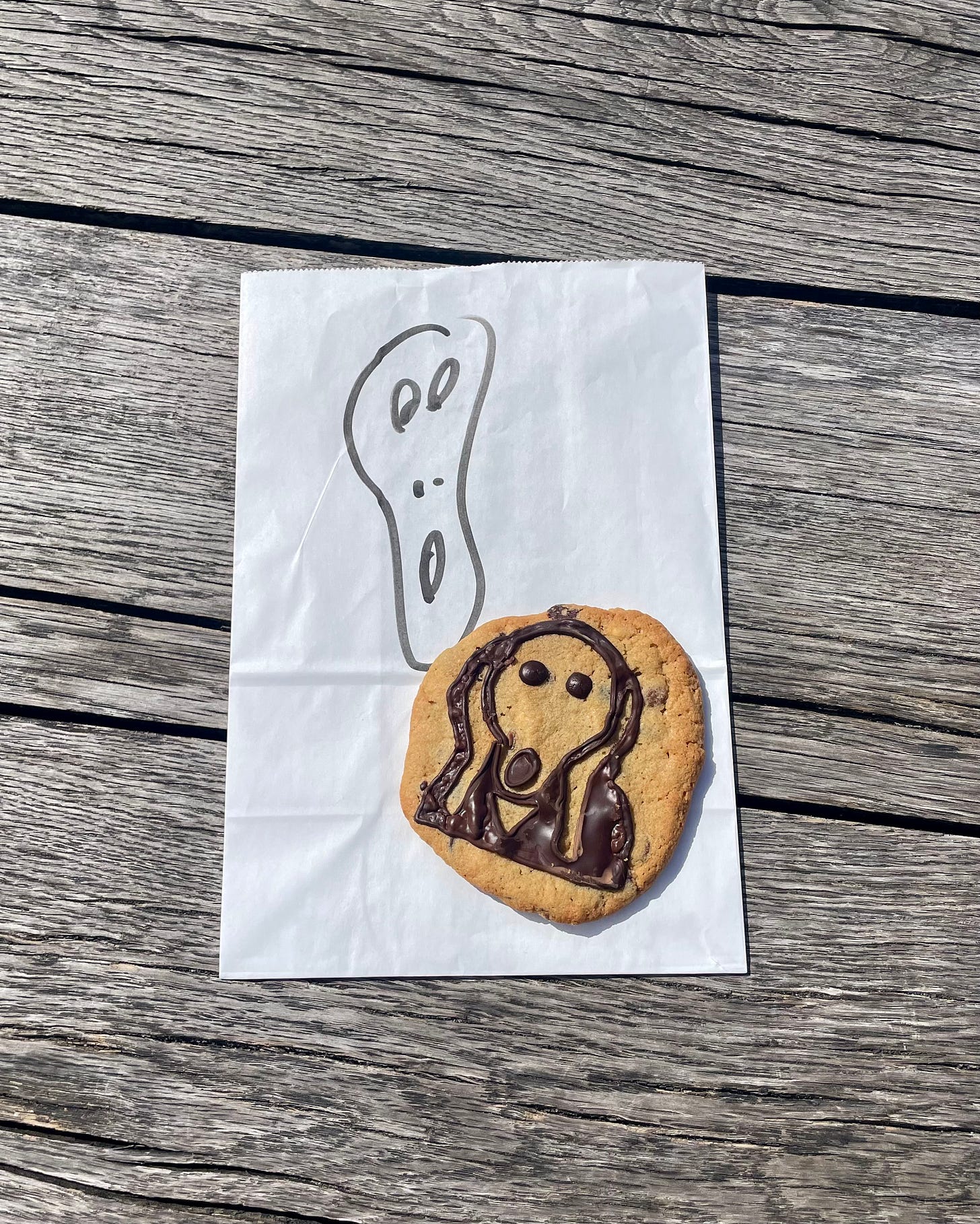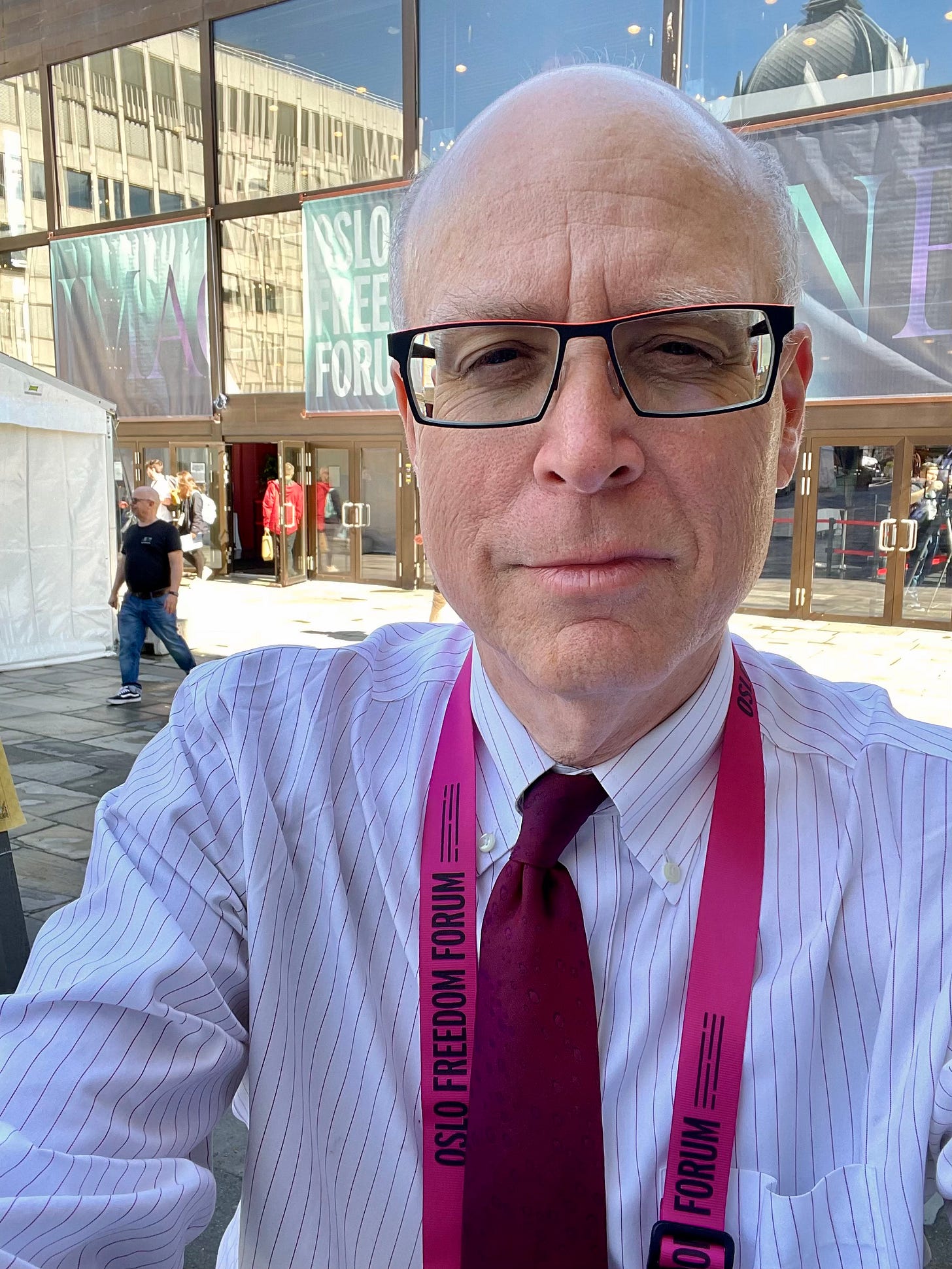Oslo Journal, Part III
On Edvard Munch, Gustav Vigeland, Sonja Henie, and other people and issues of interest
Dear readers: The Oslo Freedom Forum took place on the first three days of this week. OFF is the annual human-rights gathering in the Norwegian capital. I have said a little about this year’s Forum already. I will have considerably more to say later. In the meantime, I’ve been jotting an Oslo journal. For Parts I and II, go here and here. We will wrap up today.
Work has taken me to Scandinavian capitals—in past years and this year. Last month, I was in Copenhagen, to report on Danish politics: How are Danes responding to the new disposition in Washington? I also filed a Copenhagen journal.
To me, the Scandinavian capitals have a similar “vibe.” They are orderly, pretty, and friendly. But these capitals would be very different to Scandinavians themselves, of course.
A friend of mine here in Oslo says, “Copenhagen and Stockholm are the capitals of former powers—imperial powers. You can tell. Our capital here in Norway is peripheral. We are on the periphery.”
He does not say this in a way that puts Oslo down. Far from it. He is simply noting something real.
***
I have met many outstanding citizens here. (I discussed a few in the first installments of this journal.) Torbjørn Røe Isaksen is a highly interesting fellow. A politician (or former politician). An intellectual. A writer. A journalist.
He was a cabinet member for eight years (in various positions). Many thought he would lead his party, the Conservatives. But he turned his attention to journalism and writing.
I have some good conversations with him, one of which is on a podcast. Man alive, has he studied. I thought of Pat Moynihan: a politician-intellectual. The highest example of this is—Burke?
Isaksen is a Burke man, and a Hayek man.
He knows a great deal about America, and, in fact, has America in his background. He was an exchange student in Missouri. St. Louis? Kansas City? No, Carl Junction, in the southwest corner of the state.
“One of the best years of my life,” he tells me, “even if I had to get up extra early to attend Sunday School before church. Then again, we always went for a good meal after.”
I can picture it all, almost taste it.
***
Helle Svendsen has America in her background, too. She is a journalist here. (She and I have done an interview together.) Ms. Svendsen was an exchange student in North Carolina. Charlotte? No, although she lived in Charlotte last year, to report on the U.S. presidential campaign.
When a student, she lived in a hamlet—a hamlet called “Hamlet” (population 6,000).
She recommends a restaurant here in Oslo: Way Down South. “South” does not refer to southern Norway, but rather to . . . Dixie. Barbecue and such.
Huh.
***
I have been coming to Norway almost every year since 2009 (I think). For all this time, there has been a great question of assimilation: Will they or won’t they? Will the new arrivals to this country assimilate—become Norwegian, in some fashion—or not?
For all these years, I have seen schoolchildren chatting and playing, gaily. These include kids of various racial and ethnic backgrounds. The kids—doing their thing, all of them—act like children everywhere.
Seeing this, you think that everything’ll be okay. There are people here, however, who think that it will not be okay.
Time will tell (and is telling now, I suppose).
***
Speaking of assimilation: I’m about to cross the street. I have one foot in the road. But then I catch myself. There are children, waiting with their parents, on my side. There are children on the other side, too—waiting with their parents. There is not a car in sight. But the light is against us. And these people are finna wait till the light turns green, come what may.
My American feet itch to cross. But I cannot set a bad example for the children. (“Mommy, why is that man doing that?”) So I wait, dutifully.
So unnatural. But I’m trying to be a good Norwegian, or a good visitor . . .
***
We speak of September 11th. And October 7th. I hear a Norwegian here speak of July 22nd. That was the day, in 2011, when a Norwegian political extremist murdered 77 people, injuring hundreds more. One of the ghastliest events of that era, worldwide.
***
There was an instance of Islamist terror in June 2022. A man, radicalized, attacked a gay bar and other locations. He murdered two people and wounded about 20 others.
Norway is an extraordinarily peaceable society, but no society is without problems (else it wouldn’t be human).
***
Every year, it seems, I have to snap a picture of Sonja Henie. This Norwegian darling was a figure-skating champion and, later, a Hollywood star. She lived from 1912 to 1969.
See how winsome she is, even in stone!
***
I have to snap a picture of Lincoln, too. In Frogner Park is one of my favorite Lincoln memorials. There are two plaques on either side. The one on the left says, “Presented to Norway by the People of North Dakota, U.S.A., July 4th, 1914.” The one on the right says, “Government of the People, by the People, for the People, Shall Not Perish from the Earth.”
You will see that lilacs are blooming, too. Whitman’s poem—his elegy to Lincoln—is titled “When Lilacs Last in the Dooryard Bloom’d.”
My picture is lousy—the sun wasn’t right (or my skills weren’t right)—but I present it to you anyway, in part from devotion:
***
Just a scene, on a bright, crisp day:
***
I have checked on this kid for, like, 15 years now. He is never happy.
***
Frogner Park includes the Vigeland Installation—many, many works by the Norwegian sculptor Gustav Vigeland, who lived from 1869 to 1943. His sculptures are intensely human. Starkly so—and maybe that word “starkly” is especially appropriate because the human figures are nude.
Vigeland’s ability to depict the human condition, in stone, is uncanny. I have said “uncanny” but I really want to say “disturbing.” Looking at his works—some of them—is like staring hard into a mirror, or at one’s fellows.
He spares nothing. He lays it all bare, in multiple senses.
***
Much the same is true of Edvard Munch, the painter (who was virtually an exact contemporary of Vigeland: 1863–1944). What a weird, wondrous artist he was, in The Scream and everything else.
(Paul Johnson, in his Art: A New History, calls The Scream “the most often-reproduced and influential single image of the twentieth century.”)
There are three versions of The Scream in the Munch Museum. After my visit, I get a cookie. Here is that cookie, with its bag:
Oh, you’ve never had a Scream cookie? Not bad.
***
I tell you: If civilization can be judged by the condition of public bathrooms, Norway is about a thousand years ahead of my own dear country . . .
***
The sun has come out and the temperature has risen—which brings families to the beach:
***
In central Oslo, a carillon is playing (or something carillon-like). A carillon might play, oh, hymns. But this one is playing “Take Five”—which sounds just wrong, on that instrument . . .
***
Here is your correspondent—pressie—outside the Oslo Concert House, which hosts the Oslo Freedom Forum:
***
At the Forum, I meet a woman who recently became a Norwegian citizen. She was born and raised in Brazil. Worked there as a journalist. She decided to take a break, though, to study for a master’s. She came to Oslo. And never left. “I fell in love,” she tells me. I thought she meant with a Norwegian. She meant with Oslo.
To study for a citizenship exam was her pandemic project. She passed. “I just didn’t want to leave,” she says.
A high tribute.
Thank you for joining me, my friends, and I’ll catch you soon.











If you don't mind my asking...
"Work has taken me to Scandinavian capitals..."
I assume the prior trips were sponsored by your employers. Are you on your own dime now?
Excellent journal. Thanks!